On November 30, 2010 Apple’s share price fell more than expected on no apparent news :
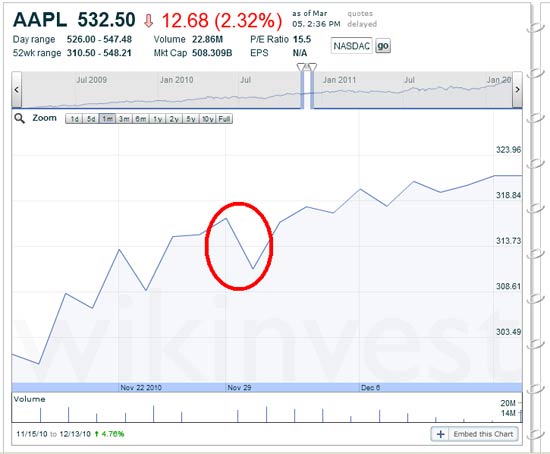
Nobody could really explain this :
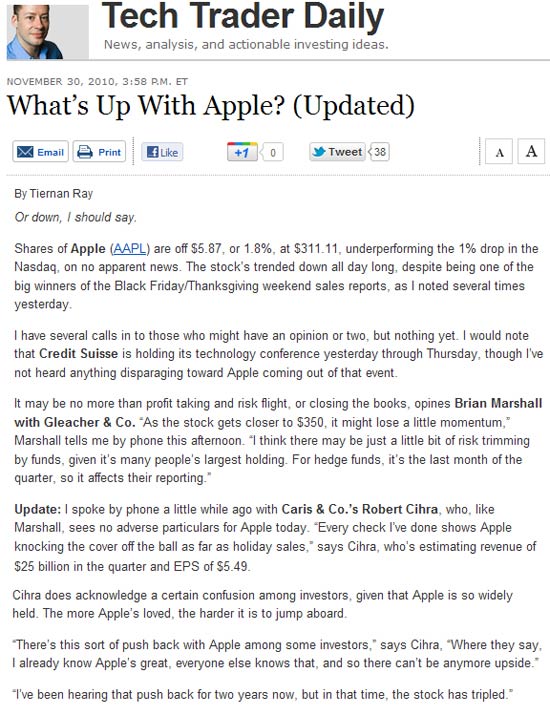
Unknown publically to most, something noteworthy did go down on November 30, 2010 :
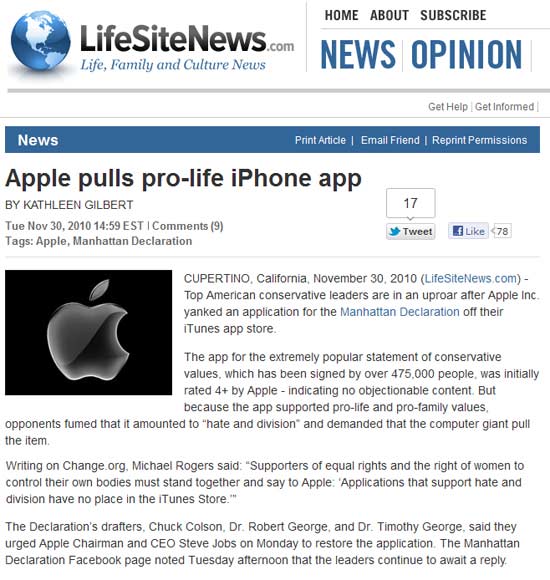
Because of vigorous blogging activity, the Conservative reactionary message with reference
to the Apple decision spiked decisively on November 30, 2010 – a 2726% increase
over normal traffic since release of the “Manhattan Declaration” Apple app…
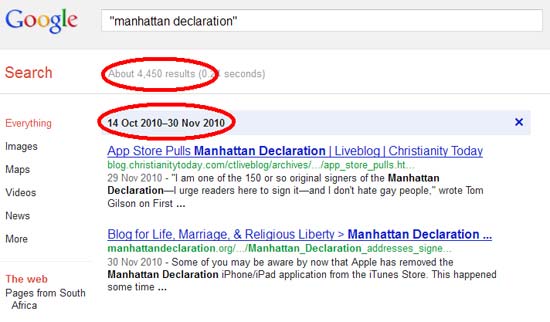
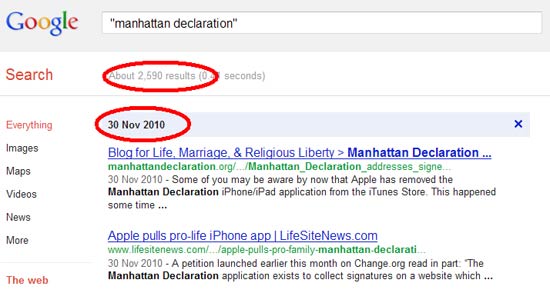
With the Conservative statement being signed by over 475 000 people,
sizeable selling action was a probability en masse.
If you could have seen this, you would have predicted the
Apple stock price move on November 30, 2010.
With share trading “obscure” matters.
Gatfol uses patented Semantic Intelligence Filter Technology (SIFT)
to quickly find the obscure on the web.

Impressive that these connections can be made. The causality can be inferred, but personally, I doubt that it is correct, and I have a number of reasons for this: Apple shares are scarce (few in issue), and expensive. Investors in Apple tend to be quite successful, and quite cold-blooded (Contrary to expectations, the news of Steve Job’s passing hardly caused a ripple in the share price). Buy and sell decisions based on ideology don’t figure much in their world. We could surmise that the sell signal is based on some idea that the retail sales of Apple products would suffer as a result of their pulling of this app. But those sales are not driven by ideology much either, and investors know this, and they are tracking those retail sales anyway.
I have a different theory explaining that event, based on my own observations. (I am an Apple shareholder). Firstly, that event was not unique. In January 2010, Apple shares had declined to around $190 from a previous high of $220 — a 15% drop, for no apparent reason. iPhone sales were going like gangbusters. They were about to release a significant new product the next week — the iPad. Their financial results, just released were spectacular. (That’s when I bought my shares).
I, and quite a few others, speculated that Apple shares are manipulated during times like these; trading is thin anyway (because of the scarcity and cost) so, offering a few shares at low prices, or even selling short, a big investor could single-handedly depress the price. Why? Because, with upcoming big positive news, you create a “slingshot” effect — and you can buy larger quantities at the cheaper price as the “day traders” are unloading based on “stop loss.”
We are experiencing a similar depression of the Apple share price right now — almost 10% off it’s highs. The “mini-iPad” will be released in the next few weeks, and the Apple Fourth quarter results (with iPhone 5 sales included) will be shortly after.
A rather unique well-researched set of facts there Piet. The Gatfol view would be that the Apple share price is precariously balanced at around 93% of GP – almost half-pregnant – to perhaps deliver investorwise when the IPhone 5+ verdict is fully in…so far definitely a glowing pulsating pendant, figuratively in addition to the already impressive halo of the late Mr Jobs….
Not sure what you mean by “93% of GP”? If you mean that the share price is 93% of “Gross Profit” (commonly called “earnings” here in the USA) then your number is off by a factor of about 15; which is the current P/E (price/earnings) ratio. This still makes Apple a relatively “cheap” share in terms of its earnings; by way of comparison, Facebook is still (after the share price dropped by 50%!) trading at a P/E ratio of 110. A bargain buy right now is Ford, at a P/E ration of around 2. A huge company, making a profit and paying a dividend. I cannot understand why it is languishing, other than one undeniable fact: it’s not sexy. Maybe Gatfol can help.
I get nervous when the P/E ratio goes over 20.